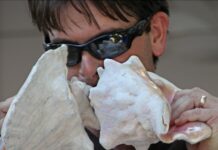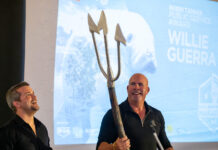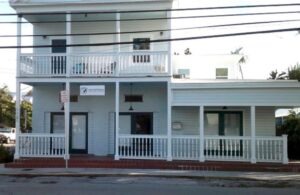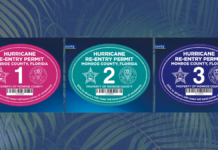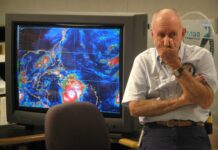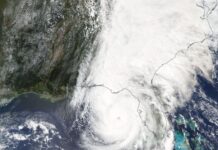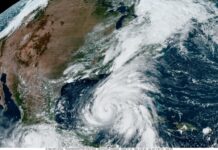Commissioner Sam Kaufman thinks it’s time to finally do something about Mt. Trashmore, and all the commissioners agreed at Tuesday’s commission meeting. It’s not the first battle cry over the now grass-covered dormant landfill, but maybe, finally, it will be the last? The Key West landmark has been hovering over the Stock Island skyline for decades and has been a questionable thorn in the city’s side. It’s wasted land in more ways than one.
At Tuesday night’s city commission meeting, Kaufman proposed a task force to study the environmental impact and possible economic solutions for the 18 acre parcel. The last commission discussion about the landfill took place in 2016 when they asked for a $76,0000 stabilzation report from CH2M Hill Engineers. John Paul Castro gave the preliminary findings of the report that has yet to be finalized.
“The initial estimate to remove the landfill to road level is 70 to 190 million dollars,” said Castro. “That would be 80 to 100 trucks running about 120 times a year, minus vacation and holidays for three to four years.” Certainly, it’s not the price tag the commissioners were expecting.
“It’s been ignored for a long time,” said Kaufman before the meeting. The landfill has passed previous testing and has been in compliance with federal regulations but that hasn’t stopped Kaufman from being concerned about the leachate or pool of waste that may have gathered under the soil over time. Leachate can contain some of the worst toxins from decomposed waste and filter into the surrounding soil, and ultimately, water. “This is an opportunity for us to confirm it is safe.” But what if it is a pandora’s box, and the city will need to spend millions of dollars to fix any underlying problems? “I am not supporting a tax increase to support this, but in turn, is it really better to ignore it?” said Kaufman.
“Right now, it meets environmental standards, and we don’t want to upset that,” said City Manager Jim Scholl at the meeting. He did confirm that there was never a liner placed under the landfill, which is usually the barrier to stop the leachate from infecting surrounding areas. “Yes, there are plenty of unknowns,” Scholl agreed. Kaufman did praise Scholl for keeping up with environmental testing far past federal time standards.
The consensus was to “determine the highest and best use” of the property over the next year. Instead of an independent task force as Kaufman suggested, the commission voted for the Key West Sustainability board to oversee the viability of the property. Kaufman did hesitate over the Sustainability’s board ability to take on another task given their time constraints. The suggestion was made that the Sustainability board be asked to meet every month instead of every two months to address the problem. Overall, commissioners wanted to learn more about economic opportunities with the looming hill. Commissioner Wardlow was keen on a solar farm or installing windmills.
Before the 1940s, the now Indigenous Park on White street and Wicker’s Field at Kennedy Drive were the two Key West landfills. Because of the smell and horseflies, a permanent landfill was erected on Stock Island outside the city, now known as Mt. Trashmore. For 50 years, the landfill gathered garbage until reaching 90 ft. above sea level. By 1993 the city adopted a “waste to energy” means of deposing garbage on the mainland, and the landfill officially stopped accepting garbage. Mt. Trashmore was covered in ash that eventually became a blanket of grass. Waste Management operated a transfer station until 2009 until they moved to Rockland Key, ending all garbage operations at the site. In 2010, Mt. Trashmore proudly displayed a “rainbow flag” celebrating Pridefest. The future of the trash mountain still hangs in the balance—and by the city’s purse strings.
